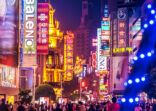Asian mutual fund assets grew 8.2% in the first nine months last year despite growing negative sentiment in global markets, according to the report. However, the growth is still lower compared to 2017 (19.5%).
The growth in the first nine months last year was mainly driven by China, where assets grew 15.6% to $1.9trn from $1.7trn in 2017. Indonesia also saw double-digit growth – at 12.3% – to $32.8bn from $29.2bn.
Looking at markets separately, India, Malaysia and Singapore, also saw their assets increase, but in the low single-digit numbers, according to the report. During the same period, Singapore-domiciled funds, for example, saw assets increase to $31.8bn from $31.5bn.
Assets in Taiwan, Hong Kong and Thailand, which include cross-border funds, were down, however, at around 1.5% on the average.
In Hong Kong, total AUM declined to $164bn during the first nine months last year from $166bn in 2017, according to the report.
China – money market on top
In China, money market funds remain the most favoured products, with their AUM accounting for around 62% of the country’s mutual fund industry, according to the report. Net inflows during the first nine months last year into money market funds amounted to RMB 1.42trn ($210bn), although it is lower compared to RMB 2.37trn of net inflows during the same period in 2017.
“Their declining yields, partly due to tightened regulations on liquidity and risk management, did not stop investors rushing into these safe havens, due to the economic and stock market downturn,” the report said.
Bond funds were also in demand in the first nine months of last year, with net inflows of RMB 399.1bn compared to RMB 145.1bn of net inflows in the previous year.
The situation is similar with Taiwan-domiciled funds, where fixed income funds saw the highest net inflows last year, according to data from Morningstar Direct.
Equity funds in China saw also saw net inflows of RMB 69.9bn, which compares to net outflows of RMB77bn in the previous year, according to the report.
On the flipside, balanced funds continued to bleed, with net outflows of RMB 226.9bn last year, which is higher than the outflows of RMB 45.5bn in 2017.
Hong Kong – themed fund inflows
Unlike China, balanced or mixed-asset funds were the most in-demand products in Hong Kong, according to the report.
Data from the Hong Kong Investment Funds Association (HKIFA) show that mixed asset funds attracted net inflows of $7.8bn during the first 10 months last year, compared with $5.3bn during the same period in 2017.
While fixed income funds were popular among Chinese investors, the asset class was largely avoided in Hong Kong. During the first ten months of 2018, fixed income funds in the SAR saw the largest net outflows at around $6.1bn. Equity funds had net outflows of $1.9bn, according to HKIFA data.
“Market volatility seems to have adversely impacted investors’ sentiments, as seen in the reduced pace of net inflows [in Hong Kong],” the report said.
However, the report noted that within equity funds, sector funds saw net inflows of $867.3m last year, adding that Hong Kong investors like funds with “compelling stories”.
“As managers and distributors woo Hong Kongers with various stories, a few product ideas have emerged in the market, typically revolving around long-term themes such as funds investing in the robotics sector or sustainable investing,” the report said.
Singapore – desire for income
Balanced funds saw the highest net inflows of S$2.79bn ($2.06bn) during the first nine months last year, while bond funds were also avoided, with net outflows of S$348.7m.
However, equity funds in Singapore had inflows of around S$982m, according to Cerulli.
“The need for regular income has been a key theme among Singaporean investors and is likely to increase as markets could continue to see volatility over the next year.
“It is likely that the multi-asset income theme will continue to steal the show as investors look for capital protection, customisation and flexible asset allocation,” the report said, adding that a manager survey by the firm showed that these were the top product features sought by investors.
















